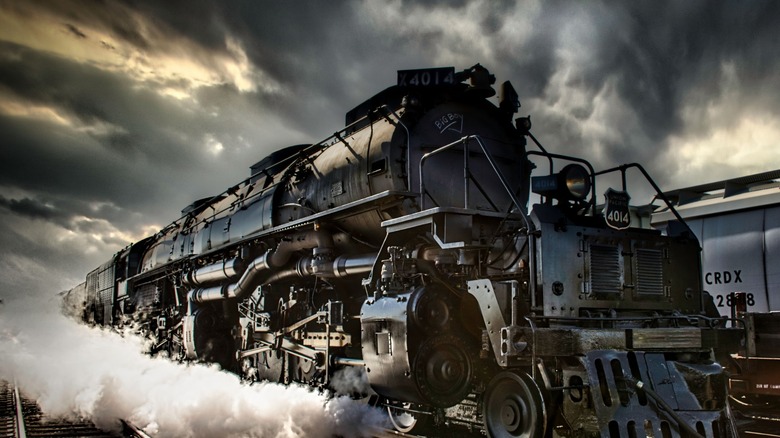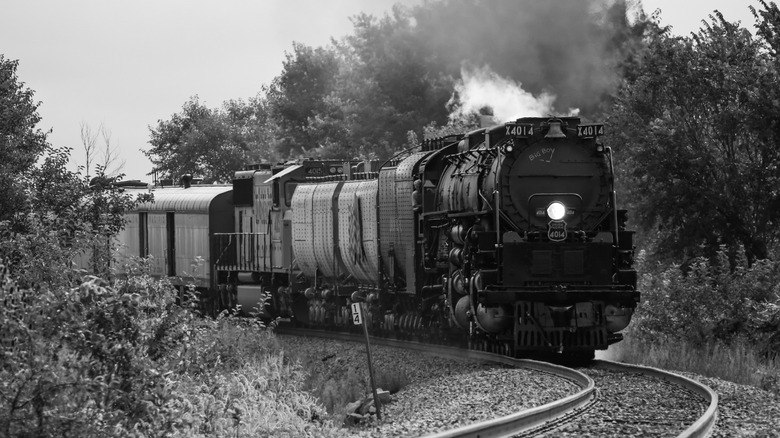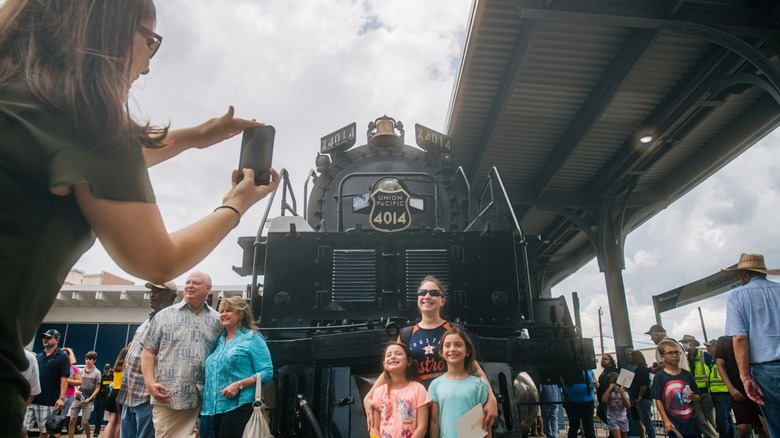The Union Pacific Big Boy: Still The World's Most Powerful Steam Engine
When it comes to the most powerful engines in modern-day, you wouldn't be alone if your mind immediately went to the highly advanced rocket engines powering spaceflight. What might be more surprising, however, is that the most powerful steam engine in the world is also one of the oldest locomotives in service and was constructed all the way back in the early 1940s. For train aficionados, this might not be the biggest surprise. After all, most of the United States replaced steam-powered locomotives in the late 1950s and early 1960s with their diesel counterparts (which are actually electrically driven).
That said, it's still impressive that the Big Boy 4014, a locomotive delivered by Union Pacific Railroad in December of 1941, still holds distinction in the Guinness Book of World Records for the most powerful steam engine in operation today with an impressive 135,375 pound-force pushing the hulking beast along its tracks. What may be even more intriguing, however, is the history behind the iconic locomotive and the story of how it's still in service to this day.
There were 25 Big Boys built by Union Pacific
The Union Pacific Big Boy was originally constructed in 1941, with its creation led by then-president of Union Pacific Railroad, William M. Jeffers, and development led by Otto Jabelmann as the company's VP of Research and Mechanical Standards. Previously, Jabelmann had worked with Union Pacific to design the Big Boy's predecessor, the Challenger. In the midst of World War II, the company was tasked with creating a more powerful steam engine that was capable of hauling heavy loads on a single locomotive, thus birthing the Big Boy.
Union Pacific originally constructed 25 of the trains, meant to travel between Utah and Wyoming across the Wasatch Mountains. So, while Big Boy is the well-known name given to the last operational locomotive from this set, several were actually produced and used over the years. Each Big Boy was 132 feet long and weighed an immense 1.2 million pounds. Capable of hauling 3,600-ton freight trains across winding terrain thanks to articulated frames, these powerful engines could output more than 6,000 horsepower.
To put that in perspective, modern-day six-axle freight locomotives typically range between 4,300 to 4,400 horsepower. This immense power enabled the steam locomotive to haul all sorts of material and freight across state lines on its 4-8-8-4 wheel configuration. Today, there are seven Big Boys on public display in museums across the United States in places like Dallas, Texas, Scranton, Pennsylvania, and St. Louis, Missouri. The last existing Big Boy in operation, and perhaps the most famous, is the Union Pacific Big Boy No. 4014.
You can take a ride on the Union Pacific Big Boy No. 4014
Big Boy No. 4014 was one of the first locomotives with the name that was ever constructed, and it was operational for a total of two decades before being retired in 1961. During that time, the train traveled an astounding 1.03 million miles before being acquired by a museum in California. In 2013, Union Pacific purchased the train back to begin the arduous restoration process and get it back into operational form. It would be six years later, in 2019, when Big Boy No. 4014 would make its first restored ride along the tracks at the Cheyenne Train Depot in Wyoming to celebrate the 150th anniversary of the Transcontinental Railroad's completion.
In July, it began its Westward Bound Tour, traveling from Wyoming to California and stopping in multiple cities across the way to offer a closer look at the locomotive. Later in the year, it will sound its whistle again when it embarks on its Heartland of America Tour, traveling from Rochelle, Illinois (right outside of Chicago) to Ft. Worth, Texas. Over its travels in 2024, the train is expected to visit 14 different states. Tickets for a passenger trip are currently sold out, but opportunities could become available later on Union Pacific Railroad Museum's website. The full train schedule can be found on the Union Pacific website.


